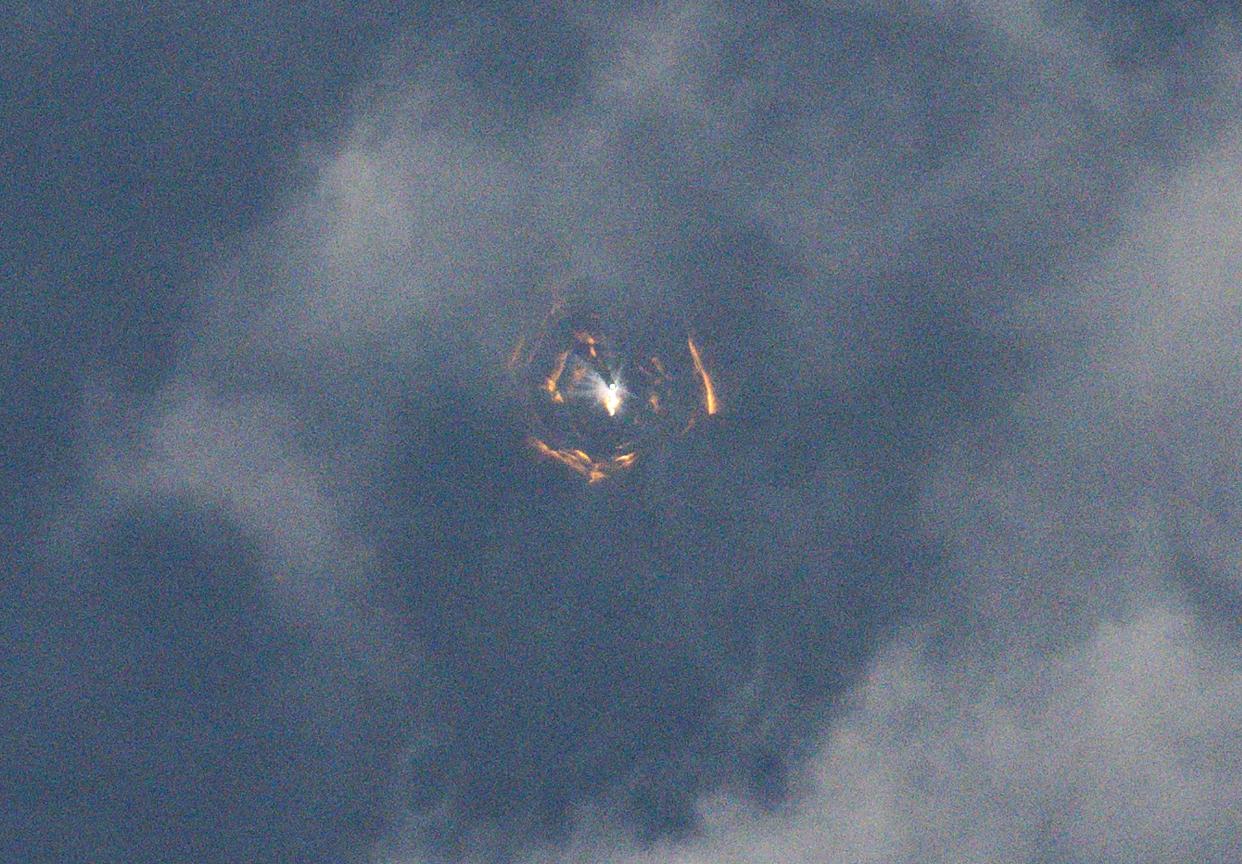SpaceX's third test flight of Starship achieves many, but not all, flight goals

The much-anticipated third test flight of SpaceX's giant Starship rocket Thursday accomplished more than any previous flight, but there's still work to do as the rocket ended in a loss of the ship over the Indian Ocean.
Still, it was much better than the two earlier flights last year that both ended in flames.
With less than an hour to go, the fully stacked SpaceX Starship began propellant loading for Starship Flight Test 3 (IFT-3). Stream poured from the first and second stages as the rocket readied for launch from its pad in Boca Chica, Texas.
See the Next Lunch from Florida Is there a launch today? Upcoming rocket launch schedule for SpaceX, NASA in Florida
Starship, which according to the SpaceX live stream, provides twice the thrust of the Saturn V, which took astronauts to the Moon. The ship promises full reusability and a quick relaunch time once fully operational.
The world watched as the clocked moved towards T-0 on Thursday. SpaceX had planned multiple benchmarks that this flight needed to achieve and on a live stream, they talked viewers through those steps.
Moving quickly towards T-0, all thirty-three raptor engines roared to life as planned, and as soon as the thrust to weight ratio reached over 1, the huge rocket sprung off the pad with massive force.

This flight, Starship successful separated from the Super Heavy booster and lit its engines in the vacuum of space as it sped to orbital velocity.
While coasting in space for more than 40 minutes, the vehicle successfully demonstrated the opening and closing of the payload “Pez” doors, which in the future will deploy Starlink satellites. This was a one of the milestones SpaceX had aimed to accomplish.
The vehicle also successfully demonstrated propellant transfer in space. This will be essential for Starship to reach its goal of bringing astronauts to the Moon and Mars.
Starlink satellites were used during the mission to send back views of Earth and essential data to mission control.
However, the SpaceX team did not accomplish an orbit relight demonstration or a landing burn, as Starship headed for a hard landing in the Indian Ocean.

At T+49 minutes, the vehicle began reentry with the friction of the atmosphere giving the ship a hot glow. The SpaceX live stream continuously emphasized that this is “fastest and furthest that Starship has ever flown.”
As the live stream views stopped, SpaceX eventually announced that the vehicle had been lost.
The company had not made any announcements on the test as of press time.
Did Starship meet its goals?
Speaking to FLORIDA TODAY ahead of the launch, founder and managing partner of Space Capital and an investor in SpaceX, Chad Anderson said that in order to be a successful test flight SpaceX was "looking at nominal first stage performance. Successful separation of Starship from the first stage in their hot firing, and Starship reaching orbit. If those things happen, this test flight will be a success.”
He said that SpaceX was seeking fuel transfer inside of starship and successfully open and close payload doors.
While Starship did not successfully land in this test, it reached almost all of these goals in Thursday’s test flight.
Anderson predicted that NASA is watching closely as it plans on using Starship to land astronauts on the lunar surface, that is after transferring to the ship in lunar orbit, during Artemis 3, NASA's return-to-the-moon mission slated for no earlier than fall 2026.
How did Thursday's launch test compare to previous two flights?
Thursday's launch took SpaceX much further along than the other two flights.
The first test flight happened in April 2023 but the vehicle only rose to 39 km (24 mi) over the Gulf of Mexico before leaking propellant caused a fire in the Super Heavy booster. This resulted in SpaceX losing communication and control of Starship. According to SpaceX, the Autonomous Flight Safety System (AFSS) — a self-destruct safety system —took over, detonating the vehicle just under 4 minutes into the flight.
The second test flight was in November 2023 and according to the SpaceX website, Starship reached space for the first time. However, trouble with liquid oxygen supply to an engine occurred during the flight. The issue caused the failure of one engine, leading to the fiery ending everyone saw.
When is Starship Launching from Cape Canaveral?
The Space Coast may get to see Starship launch up close in the coming years.
SpaceX officials hope a new Starship-Super Heavy launch complex becomes operational by 2026 at Cape Canaveral Space Force Station, pending environmental approval.
SpaceX's preferred Starship site: Launch Complex 37, where United Launch Alliance sends the retiring Delta IV rockets into orbit.
SpaceX has much work ahead of them. Before Starship can launch from Cape Canaveral, it must go through must more testing — and the launch site must pass environment reviews.
“The FAA will be heavily involved in making sure something is safe before it flies from here. In fact, even down there in Boca Chica, Texas, the FAA has been involved quite a bit,” said Don Platt, an associate professor of space systems from Florida Institute of Technology, who spoke to FLORIDA TODAY ahead of Thursday's launch. “Before it ever ends up launching from here, it will be a much safer system than they tested on that first one.”
Next Starship Launch?
SpaceX has not yet announced the 4th flight test, yet SpaceX CEO Elon Musk commented on X days ago that the company is seeking at least six more flights of Starship from Texas this year.
In a reply to to Eric Berger (@SciGuySpace) of Arts Technica and author of LIFTOFF, a book on the history of SpaceX, Musk stated “Hopefully, at least 6 more flights this year”.
Contact Space Reporter Brooke Edwards at [email protected].
This article originally appeared on Florida Today: SpaceX Starship achieves new milestones its third test flight, ITF-3
